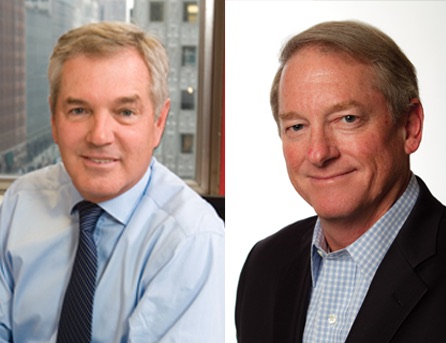Left by MG, Meredith Turns to Cox

The week before the Nexstar-Media General marriage was officially consummated after a long and contentious three-way courtship, onetime suitor Meredith had meetings at NATPE in Miami to let syndicators know that its allegiances now lay with Cox Media Group.
Granted, Meredith’s attempt to buy Media General involved much more than just either group’s TV stations. Meredith also owns newspapers, magazines and other assets. But to compete in today’s environment of media consolidation, groups such as Meredith need scale.
The Meredith and Cox TV station groups fit together almost hand in glove, with the exception of one market, Atlanta, where both groups own a big station. That market will be carved out of the agreement the two groups are forging between each other. Overall, Meredith plus Cox creates a coalition that is about as big as the Hearst station group.
For starters, Meredith and Cox are now working together when it comes to clearing syndicated programming, whether that’s buying new shows or renewing veteran programs, such as CBS Television Distribution’s Dr. Phil, which is in the market right now seeking renewals.
“We’ve brought together this very like-minded group that covers about 20% of the country, in primarily large to midsize markets with the No. 1 or 2 stations in each of those markets,” says Paul Karpowicz, president, Meredith Local Media Group.
“Every [syndicator] wants a big footprint and wants to be able to crack big markets, but they also want to be on good stations with good time periods,” says Bill Hoffman, president, Cox Media Group. “I think that’s the attractive part about working with this Meredith-Cox Media Group cooperative.”
Syndicators agree. “Cox and Meredith are both highly valued groups with whom we would like to continue to expand our business,” says Ira Bernstein, copresident of Debmar- Mercury. “This new arrangement will bring them both into the process as early as any major player, and they can have a strong voice in any new show development.”
Broadcasting & Cable Newsletter
The smarter way to stay on top of broadcasting and cable industry. Sign up below
For studios selling programming to TV stations, consolidation is a double-edged sword. On one hand, it makes life easier to make a few calls to a few groups and have your show sold across the country. On the other, it’s often more lucrative to take shows out market by market and sell them to the highest bidder. But as the TV station groups get bigger and more powerful, they are often able to force deals that preclude program sellers from being able to do that.
Two program executives at Meredith and Cox will oversee programming negotiations for the new partnership: Doug Lowe for Meredith and Jane Williams for Cox.
Doubling Down
The two groups are launching their new partnership by collaborating on programming, but they expect that’s just the first thing they’ll do together. Possibly next up: partnering on large purchases of broadcast equipment, such as cameras. Both Meredith and Cox plan to hold meetings with technology companies at the upcoming NAB show in Las Vegas. Karpowicz and Hoffman also didn’t rule out possibly developing new content together.
While a merger between Meredith’s and Cox’s parent corporations isn’t currently in the works, it’s also not out of the realm of possibility. As Nexstar CEO Perry Sook said at NATPE last month, “we’re in the middle of the ballgame on consolidation,” predicting that ultimately only “10 to 12 major TV players” will exist.
Contributing editor Paige Albiniak has been covering the business of television for more than 25 years. She is a longtime contributor to Next TV, Broadcasting + Cable and Multichannel News. She concurrently serves as editorial director for The Global Entertainment Marketing Academy of Arts & Sciences (G.E.M.A.). She has written for such publications as TVNewsCheck, The New York Post, Variety, CBS Watch and more. Albiniak was B+C’s Los Angeles bureau chief from September 2002 to 2004, and an associate editor covering Congress and lobbying for the magazine in Washington, D.C., from January 1997 - September 2002.

